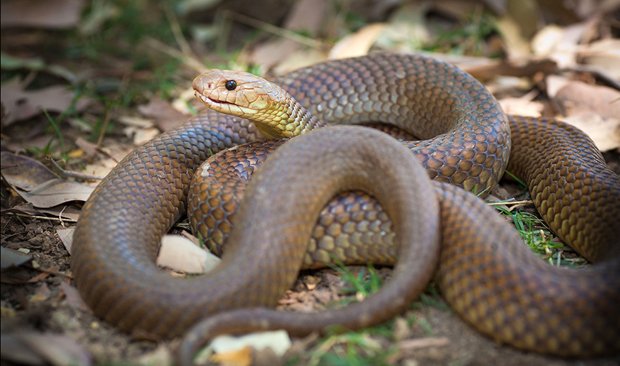Behind the image: dangerous animals

LAST YEAR I WAS on Mornington Station in the Kimberley on an assignment for Australian Geographic. There is plenty of fantastic scenery to shoot and lots of scientists doing interesting things but I always like to make sure I have photographed some of the local flora and fauna.
Flora is easy, it doesn’t run away or bite you (mostly). Animals are trickier as they can be rare, or nocturnal, or shy, or downright dangerous. Snakes are beautiful animals, I’m not scared of them and I enjoy photographing them but, in the field, dealing with the dangerous ones can be a challenge.
I much prefer to photograph non-captive animals – ie not in cages or zoos. I like to shoot in controlled conditions though. It’s just not feasible to try and find small marsupials in the desert; for example, you really need to trap and release.
So, back to snakes.

I was fortunate that one of the resident scientists at the station was a herpetologist and he showed me how to get good photos of snakes with minimal risk. I need to make it clear that I would never do this by myself; not only would it be almost impossible to do single handed, but this method is only for the highly experienced – both snake wrangler and photographer. Like I said, do not try this at home.
For tools we needed a bucket and a snake pole. The first thing was catch a snake – in this case a big bad western king brown, about as venomous a snake as you could hope to find.

The process was:
1. The bucket goes on the ground upside down.
2. The pole is used to tilt the bucket so there is a small entrance gap.
3. The snake is released next to the bucket and instinctively does into the nice dark space where it is obliged to coil up.
4. Wait a few minutes for the snake to settle.
5. Lift of the bucket to reveal a perfectly coiled snake with its head raised – this pose lasts for only a couple of seconds so be ready with the camera.
6. I run and my herpetologist re-captures the snake – hopefully.
Easy – what could possibly go wrong? In this case, fortunately, it all went right.
Nick Rains has been an Australian Geographic photographer for 10 years and was ‘Australian Geographic Photographer of the Year’ in 2002. He is also the editor of Better Digital Camera magazine. You can see more of Nick’s photography and read his blog here: www.nickrains.com

